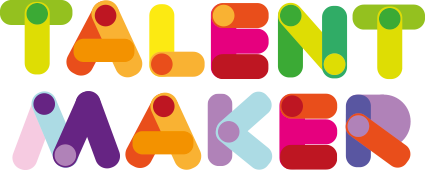The Maker Education awakes everyone’s inner motivation to create, design, modify, build or make things. It does it in an informal, playful, collaborative and sometimes functional way. In the process, people use a learning network, their knowledge of different disciplines, to build up what they have imagined result of their interests or desires.
Influenced by the culture DIY (Do It Yourself) or recently DIWO (Do it with other), the main benefits of the Maker Education, other than the foster of the STEAM, are the development of an empowering sense of self and community that inspires all to shape our world.
However, to fully understand the relevance of the Maker Education in educational contexts, its implications and origins, we have to go back to Jean Piaget’s Constructivism.
2.1- Constructivism
Jean Piaget was a renowned Swiss psychologist well known for his Theory of cognitive development and other valuable contributions to his field on childhood. He was considered the father of Constructivism, a learning theory that supports that children put their knowledge up making a process of assimilation of what is new concerning what they already know. In other words, Jean Piaget stated that children acquire comprehension with what is meaningful for them in a self-construction cycle.
2.2- Constructionism
Seymour Papert, professor at the MIT Media Lab, had the opportunity to work with Jean Piaget and, as his disciple, developed his ideas over the years from which emerged ad new learning theory: Constructionism.
With this theory, Papert put forward that humans build their knowledge better when they participate in the construction of shareable and meaningful “artefacts” such as poems, robots, crafts, etc. On the whole, he considered that we put together knowledge in our minds while making something with our hands.
Like Piaget, he affirmed that children gain understanding from their interaction with the learning object. Conversely, and that became the main difference with Constructivism, he remarked that the effectiveness of the learning process would increase if they constructed significant shareable products after their interactions with the object.
Mindstorms: Children, Computers and Powerful ideas (1980), Papert’s major-league book, lay the basis of what nowadays we know as Computational Thinking, Creative Computing and Maker Education. It also presents the first programming language for children: LOGO. But, foremost, the book contemplates computers as a medium of self-expression and a tool for knowledge construction instead of a device for consumer users.
2.3- Lifelong Kindergarten and the Creative Thinking Spiral
Mitchel Resnick, a Seymour Papert student, is the LEGO Papert Professor of Learning Research at the MIT Media Lab and leads the Lifelong Kindergarten research group founded by himself.
The explicit goal of his team is to help people, especially children, become creative thinkers through the development of technology activities and learning engagement. These activities are designed to support what they have defined as the “Creative Thinking Spiral”.
When learners follow the spiral process, they imagine what they want to do, create a project based on their ideas, play with their creations, share them with others and reflect on their experiences to imagine and start the whole cycle all over again.
The natural learning promoted by the spiral remembers the characteristic learning process of kindergarten, which Resnick’s team considers should be the learning approach during our entire life. Hence, the name of their research group.
A representative example of the Lifelong Kindergarten job is Scratch, child-friendly programming software and an online community. Moreover, they collaborate with the LEGO company to design new educational products, for instance, LEGO mind storms and LEGO WeDo robotics kits.
2.4- Computational Thinking and Creative computing
Although both concepts were introduced in Mindstorms, Jeannette M. Wing popularized computational thinking in education and psychology research in 2006 in an article where she defined it as solving problems, designing systems and understanding human behaviour relying on the fundamental concepts of computer science. Furthermore, she suggested that this reasoning style is an essential skill as it applies to problem resolution in different fields, not only in computer science. Therefore, she thinks that it should be integrated into other disciplines.
After her publication, other authors have proposed their definitions agreeing on computational thinking as the ability to identify problems that can be solved similarly to what a programmer would do when giving instructions using a programming language (Berry and Selby & Woollard, 2014). Besides, among its benefits, it is generally thought that its practice boosts skills like creative resolution, ambiguity tolerance and complexity management.
On the other hand, with the digital technologies spread, creative computing has grown into an educational trend. Engineers, educators and researchers have created accessible technology tools for children to express themselves, initiate projects and share them with others. These tools, with little previous knowledge required, cover the interdisciplinary area enclosed by creativity and computing. What is more, they spur children to program and make tangible things while participating in an online community.
2.5- STEAM
STEAM Education is a learning approach that blurs the boundaries of Science, Technology, Engineering, Arts and Mathematics to promote project-based learning.
The acronym STEM, the same without A, became popular because its subjects were considered key to future jobs and the knowledge economy. A few years later, the A was complementary added representing the Arts and, widely, the Humanities and Social sciences. The intention was to broaden the benefits of hands-on education: collaboration, dialogue, creativity, inquiry and critical thinking. Also, to take advantage of the properties of art: personal expression, empathy, meaning-making, purpose.
2.6- Inspirational projects
Many schools, non-profit organisations and education researches are currently exploring ways to motivate children to take control of their own learning while they make/build/create/invent within workshops, makerspaces, hackspaces, etc. Accordingly, as you will see in the following section, our implementation of the project has been inspired by initiatives like Kriti Activities1 and Paper Crane Lab2, accessible, affordable and hands-on STEM and Maker education.
1 https://kriti.unstructured.studio/
2 https://home.papercranelab.com/#about

